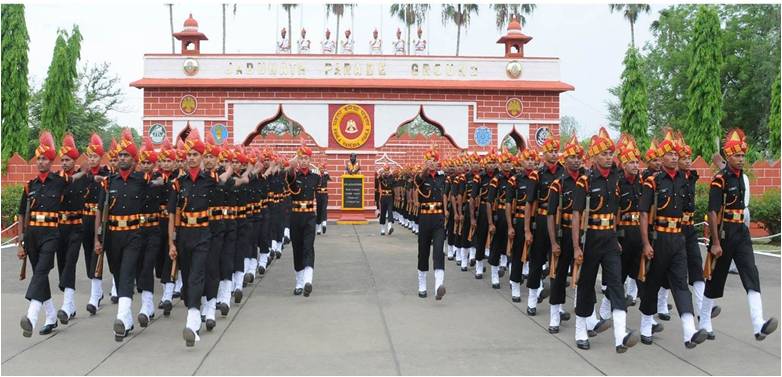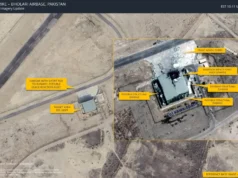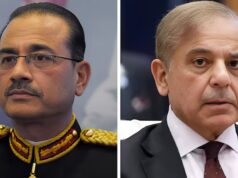Bringing the Regimental Centers Back

By Colonel Satish Singh Lalotra
‘Your arms, uniform and accoutrements are ready waiting for you’—-Lord Kitchen
The ‘Regiment ‘or ‘Corps’ is the key component of the army. They are the largest permanent organized units. Because they are permanent organisations, each regiment has its own long history, traditions and insignias. Originally established as an administrative unit for specific branches /arms like the infantry, armoured corps or artillery they form the organizational basis of the army. They are the bricks upon which the entire edifice of army has been built.
The regimental system has its roots in the 17th century when both aristocrats and professional soldiers were commissioned by the Kings and Monarchs to recruit troops in the British army. Raised as Colonels, these men raised, dressed and equipped their regiments.
Indian army a legacy of the British army is no different when it came to the regimentation of its troops. Over the years regiments have varied in size as to how many regular &TA battalions they have, prompting thus a change in its overall look too.
Nevertheless this system has established a feeling of service, comradeship and regimental pride that lies at the head of Indian army’s fighting spirit. It has frequently been a major factor in enabling the soldiers to prevail, sometimes against impossible odds or in conditions of extreme hardships.
The spirit of a regiment was embodied in the “colours’ (for the infantry) or ‘Guidons’ (for the cavalry) ‘Guns’ (for the artillery) etc. These standards (flags) carried a regiment’s battle honours awarded by the kings, Monarchs or the Maharajas to commemorate bravery in campaigns.
To lose the ‘Colours’ to the enemy was the greatest disgrace a regiment could suffer. Soldiers therefore defended them with their lives.
As mentioned earlier, Indian army is a legacy left behind by the British in its ethos, culture and traditions drawing sustenance albeit from its centuries old martial race theory etched permanently in its psyche from age old ‘Manu’s theory of classification of races’.
In ‘Manusmirit’ the ‘Divine theory of organ of state’ the so called ‘First man ‘ as per Hindu mythology propounded king as the creator of security and protector of people with his army as an instrument of state protection.
Though after independence with changing times Indian army too has metamorphosed taking the socio-economic cum cultural upheavals into its stride, the basic strand of leadership has remained rock solid. Majority of Indian army troops are from rural /mofussil regions which traditionally have functioned as the feeder stations for the armies be it before independence or after 1947. Troops from the fighting arms i.e. Infantry, armoured corps and artillery have always been regimented along caste and language lines thus cementing the espirit de corps during operations. Though off late ‘All India class(AIC) phenomenon has now changed the recruitment pattern in the army, but still the cutting edge of the fighting force hinges on rigid lines of caste, language and religion.
No wonder the traditional recruitment centers/regimental centers of such armies are in the related population centers which form the primary source of induction of its personnel. Leaving aside the Dogra, JAK rifles, Punjab and Sikh regimental centers, all other regimental centers are based in their traditional population centers. Starting from JAT, Raj rif ,Rajputana , Maratha, Garhwal ,Gurkha and Kumaon to name a few, the pattern is very clear with their centers at Bareilly, Delhi, Belgaum , Lansdowne, Subathu, Varanasi and Ranikhet respectively. The present write up primarily focuses on JAK rif and Dogra regimental centers only which have been kept away from their traditional recruitment zones i.e. J&K, Punjab and Himachal pradesh.
The traditional sword arm of northern India, the Dogras have always gravitated towards the profession of arms either due to historical reasons or due to the compulsions of socio-economic constraints as found obtained in their areas. They were first enlisted in 1858 as ‘Agra Levy’ by the British East India company as part of ‘Bengal army’ on express orders of the then commander in chief Sir Fredrick Roberts ,VC, KC, GCSI, GCIE, VD, FRGS who was mighty impressed by the soldierly qualities as displayed by the Dogra race. Initially they were raised in various places by the British with each battalion having its own depot that was later on consolidated after 1st WW into one single depot known as training battalion ( later as 10th Bn of Dogras) .
In 1943 this training battalion ceased to exist and was named as ‘Dogra regimental center’. After independence the regimental center was established at Meerut in 1952 which later on shifted to ‘Faizabad cantt in June 1976. The British had drafted a policy of Dogra recruitment as per the locations of its battalions in the country with their respective recruitment depots all over India. May be the British felt insecure by the idea to have such a first class fighting race congregating at one place for recruitment. The same propensity of them was exhibited during the establishment of various ordnance factories in the country with a tacit
understanding that entire components being made and tested at one place for the entire weapon system or arm in totality will not exist fearing that if natives got control of an ordnance factory with full complement of weapons and its manufacturing process their existence as a colonial power would be threatened.
As for the JAK Rifles center, it is pertinent to mention that though drawing its lineage from the state forces of J&K all its recruitment business was carried out as late as 1963 from its erstwhile state of J&K when its designation got changed to JAK Regt and shifted out of the state to Jabalpur in MP. With present size of 22 Battalions JAK rifles packs a punch in itself. Having stated that, the questions which demand an immediate answer are quite in number in so far as the relocation of both Dogra & JAK Rif centers are concerned. It seems quite natural progression of events and places to put things in the present context for both regimental centers to be at the hub of their recruitment population zones i.e. J&K, Punjab and Himachal Pradesh.
Some of the ideas as food for thought for bringing these two regimental centers in close proximity to their feeder stations are enumerated as under—
- Why and what was the reason for shifting the JAK Rifles center from the erstwhile state of J&K to Jabalpur in faraway MP when the same was functioning very well under the imperial army of Dogra rule since 1846?
- It is a known fact that the unemployment rate in the UT of J&K stands at about 24% well above the national average of 7.6%. Will moving the regimental centers act as a guiding light for the unemployed youth to seek their glory under the sun by making them help join the army via these facilitator /recruitment centers?
- Will not the process of going for recruitment etc to these regimental centers away from J&K pinch the pocket of prospective ‘Agniveers’ who as it is are in dire straits?
- Aren’t these regimental centers of J&K and Dogra a good icon of Naam, Namak and Nishan for the general public of the UT and Dogra population as such.?
- Since the regimental centers are a large static organization, their establishment can further the way for solidifying ancillary units and generate employment for the assorted people engaged in the center.
- A direct but subtle message can be sent across our western adversary of normalization of situation in J&K by bringing these regimental centers back to focus.
- The regimental centers act as a binding force for the civilians too who in the present times of expediency of things are looking for something to anchor their beliefs in the nationhood this country represents.
- The recruitment process can be made easy for the various CRO/ZROs who will be let off the hook to a large extent by shifting of these regimental centers back to the UT.
- The archives of state forces of J&K which are now lying in as state of dereliction and moribund status can be offered a fillip by shift of these regimental centers back to J&K.
The above mentioned points have to be seen in the light of the fact that when JAK LI and Ladakh scouts Center can be established at Srinagar and Leh (Phyang) years ago what are compelling factors to keep back the the Dogra and JAK rifles centers out of J&K? Considering the fact that both JAK LI and Ladakh scouts owe their origins to the erstwhile state forces of J&K before 1947, the idea of locating the Dogra troops center at Jabalpur and Faizabad is preposterous and smacks of a deep rooted conspiracy whose time has come to be straightened. With the grant of holiday for J&K in remembrance of birth anniversary of HH Maharaja Harisingh on 23 September every year it is in the fitness of things that his erstwhile forces which were the largest in the princely India before 1947 be given due recognition by way of shifting the regimental centers of Dogras and that of JAK Rifles back to the UT of J&K.




